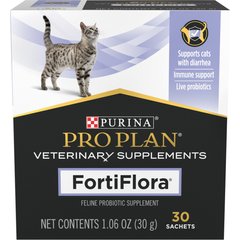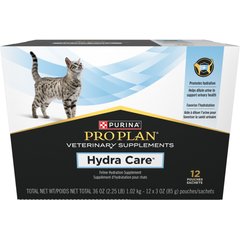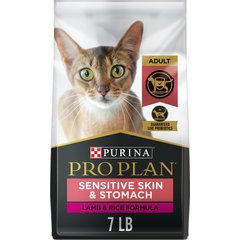Why Your Cat Can’t Go Without Food
Because cats have an innate ability to hide illness, an underlying disease might be quite advanced by the time a pet parent notices a problem. An important red flag is a change in appetite. There are many reasons for a cat to develop partial or complete anorexia. Medical problems such as kidney disease, pancreatitis, ingestion of non-food material, cancer, dental disease, urinary tract disease, and arthritis can all deter a cat from eating.
In addition to health issues, a cat’s psychological well-being can also play a role in altering a cat’s hunger. Stressors such as a move, the addition of a new baby or pet, or any environmental change can impact a cat’s appetite.
Since a change in hunger is often not manifested until the late stages of illness, it is extremely important for pet parents to be in tune to their cat’s appetite and to seek medical attention at the first sign of a problem.
How Long Should You Wait to See Your Vet?
The decision as to how long to wait before taking your cat to a veterinarian depends on your individual cat. It is necessary to be familiar with your cat’s unique behaviors. Some cats are notoriously finicky and skipping one or two meals is not unusual. Other cats may be prone to eating less following sporadic vomiting episodes due to hairballs, plant ingestion, or other unexplained reasons.
Cats with chronic upper respiratory issues will often have periods of diminished appetite related to nasal congestion. Pet parents of cats with some of the above tendencies are more likely to wait longer before scheduling a veterinary visit, since it is not abnormal behavior for their cats to occasionally skip meals.
Vet Recommended Health Support
- Feliway Optimum Enhanced Calming 30 Day Diffuser for Cats$29.99Chewy Price
- Purina Pro Plan Veterinary Diets FortiFlora Powder Probiotic Digestive Supplement for Cats, 30 count$30.99Chewy Price
- Purina Pro Plan Veterinary Diets Hydra Care Liver Flavored Liquid Supplement for Cats, 3-oz pouch, case of 12$14.99Chewy Price
- Purina Pro Plan Adult Sensitive Skin & Stomach Lamb & Rice Formula Dry Cat Food, 7-lb bag$28.08Chewy Price
The Dangers of Sudden Weight Loss in Cats
If your cat, for no apparent reason, fails to eat for 24-36 hours, even in the face of normal water consumption, an examination by a veterinarian is recommended. Significant, and even life- threatening problems can occur if a cat is completely anorectic for a few days, or partially anorectic for a few weeks.
The repercussions of a poor appetite with subsequent reduction in body weight by at least 30 percent are particularly dangerous for overweight cats. Obese cats that fail to take in adequate calories begin to mobilize their fat stores for energy, leading to an infiltration of fat to the liver. Hepatic lipidosis with resultant liver failure will take place if the liver cells are unable to remove the excess of fatty deposits.
Because cats are obligate carnivores, protein intake is extremely important compared to omnivores such as humans and dogs. Prolonged depletion of protein consumption exacerbates hepatic lipidosis.
Some conditions, such as diabetes mellitus, drive the urge to drink and may provide a false sense of security for pet parents.
Dehydration is an Emergency
While hepatic lipidosis can take several weeks to develop, the more immediate concerns for cats that are not taking in adequate nutrition and water are a weakened immune system and dehydration.
Even if the cat is drinking plenty of water, if there is vomiting or diarrhea the cat will not be able to maintain adequate hydration, which can rapidly become an emergency needing supportive care at a veterinary hospital.
Waiting too long to have your dehydrated cat examined and treated will worsen its long-term prognosis.
Physical Signs of a Life-Threatening Emergency
In addition to noticing a poor appetite, pet parents may perceive that their cat has lost weight. A reduction in weight is apparent when the cat feels lighter when picked up or when the spine feels more prominent to the touch.
With both weight loss and dehydration, the cat’s eyes will develop a sunken appearance. The eyes can also be a tell-tale sign of hepatic lipidosis as the sclera (white of the eye) develops a yellow, or jaundiced, appearance.
Cats that have been eating poorly and losing weight will also become depressed and weak. The observation of any of these problems warrants an immediate veterinary visit.
Some Tricks to Get a Cat to Eat
If you notice that your cat is eating less food than usual, or not eating at all, some tricks can be tried at home before scheduling a doctor’s appointment. If your cat eats canned food, you can try a different flavor, or try lightly warming the food before serving.
Some cats are very particular about the consistency or texture of food. Switching from a minced product to a pate, or vice versa, might entice a finicky eater.
Dry foods come in a variety of shapes and sizes. A change to a different shaped kibble may be helpful. If you feel comfortable, and your cat is willing, gently opening its mouth and putting a small taste of food on the tongue can often work to stimulate a cat’s appetite.
If these tactics do not work, or your cat is showing other symptoms of concern, be proactive and schedule a veterinary visit. The more compromised your cat becomes due to malnutrition and dehydration, the longer the road to recovery.




